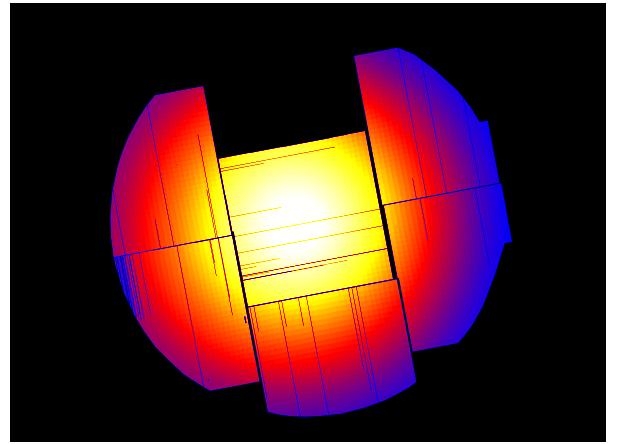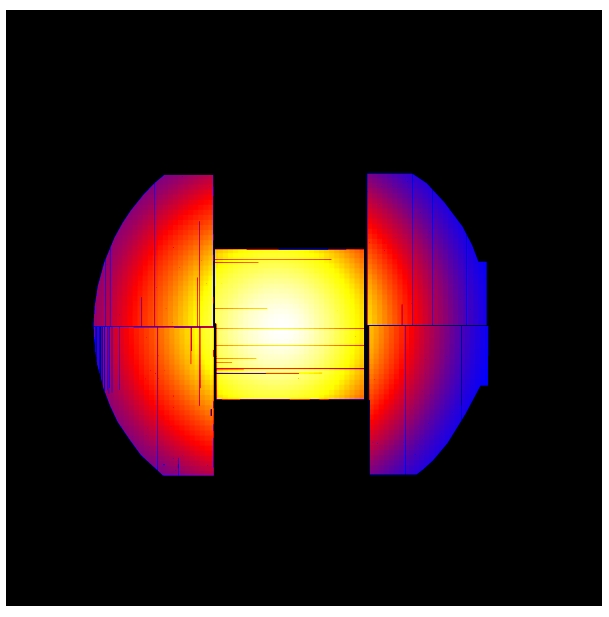EPIC MOS1 Event of Rev. 2382 - XMM-Newton
EPIC MOS1 Event of Rev. 2382 |
Last updated: 30-Apr-2013 |
EPIC MOS1 Event of Rev. 2382
At about 06:51 hrs.UT on 11 December 2012, during XMM-Newton revolution 2382, an event was registered in the focal plane of the EPIC MOS1 instrument. The characteristics of the event were reminiscent of a similar event registered in the MOS1 focal plane on 9 March 2005 and of other less energetic events registered in the MOS1 focal plane on 17 September 2001, the MOS2 focal plane on 12 August 2002, and the pn focal plane on 19 October 2000, which were attributed to micrometeoroid impacts scattering debris into the focal plane. In each MOS case a bright flash of light caused data buffer overflows for the CCDs across the whole focal plane, and in all cases a number of new hot or defective pixels were subsequently mapped and masked. The consequences of the event on 9 March 2005 were more significant meaning, in addition, the loss of one of the seven MOS1 CCD detectors, namely CCD6:
http://www.cosmos.esa.int/web/xmm-newton/mos1-ccd6
After the event on 11 December 2012, another peripheral CCD, namely MOS1 CCD3, is significantly damaged.
No impact on the other X-ray instruments has been observed.
Scientific observations are continuing normally with XMM-Newton, including MOS1, but now without data from CCD3, or from CCD6 as a result of the 2005 event.
Scientific impact of the MOS1-CCD3 loss
The science impact of the loss of MOS1 CCD3 is small:
CCD3 is one out of the six original peripheral CCDs of MOS1. It covers, to a first order approximation, slightly less than 1/7 (or 14%) of the geometrical area of MOS1. MOS1, in turn, only contains some 22% of the total effective area of the EPIC instrument with MOS1, MOS2 and pn, operating simultaneously. Therefore, the impact of the loss of CCD3 is zero for on-axis point sources and extended sources with radius smaller than 5.5 arcmin. For sources falling in CCD3 or for the extended emission of on-axis sources at distances larger than 5.5 arcmin, there is a 22% decrease in effective area (or 12% decrease in signal-to-noise ratio) over 14% of the field.
The combined impact of the two events from March 2005 and December 2012, which affected MOS1 CCD6 and CCD3, respectively, remains zero for on-axis point sources and a 12% reduction of the signal-to-noise in about 28% of the off-axis field of view for point-like or extended emission at radial distances larger than 5.5 arcmin.
Please refer to this report for more details.
Scientific impact on the other MOS1 CCDs
The analysis carried out indicate that the impact on the other MOS1 CCDs is very small. Please refer to this report for more details.

Exposure map corresponding to exposures after the loss of MOS1 CCD6 in Rev. 961 and
before the loss of of MOS1 CCD3.

Exposure map corresponding to exposures after the loss of MOS1 CCD3.
- Removed a total of (2) style text-align:center;
- Removed a total of (1) align=center.
- Removed a total of (1) align=right.








































 Sign in
Sign in
 Science & Technology
Science & Technology